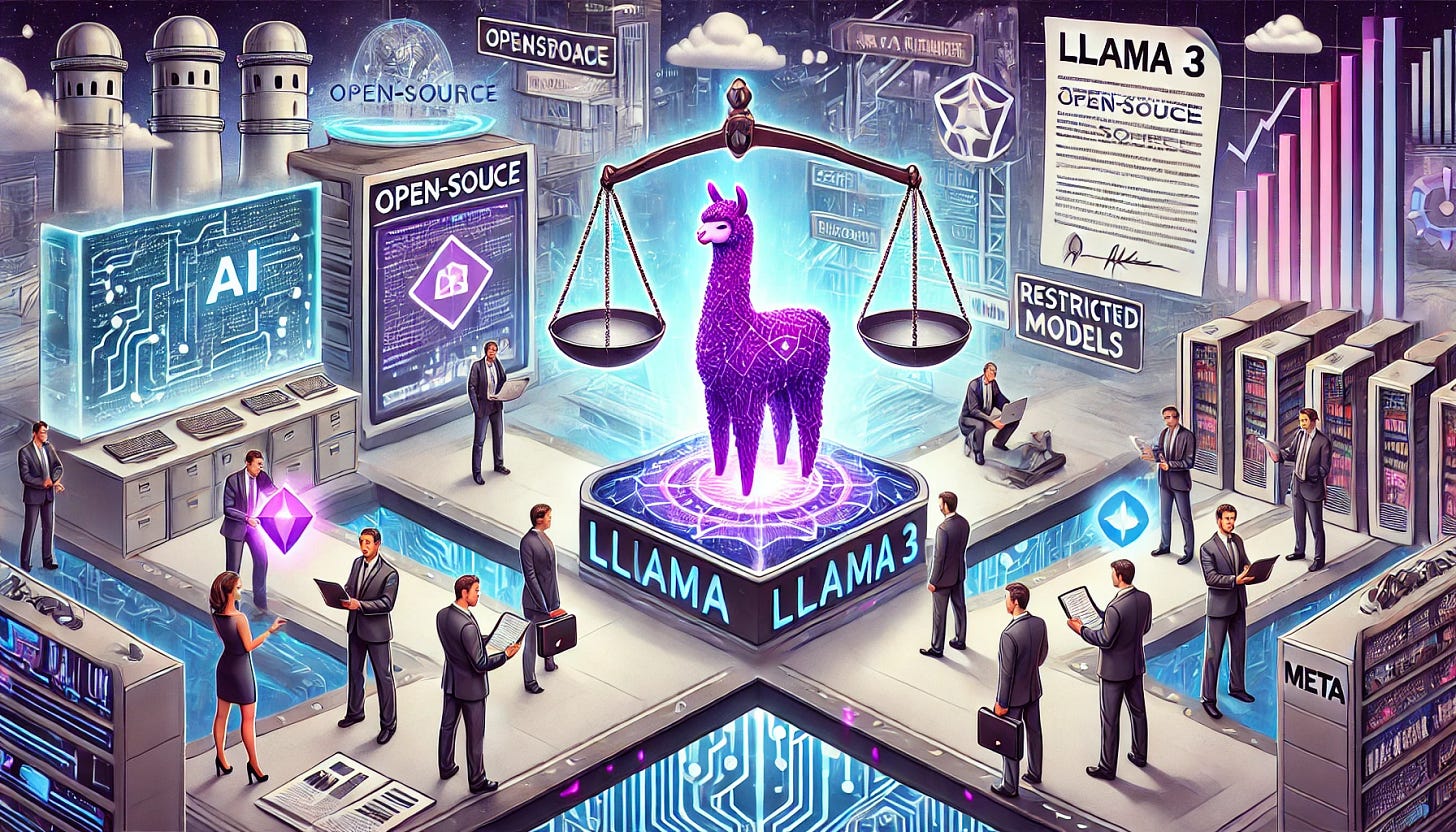"Faux-pen" Source: Meta's Llama models
Founders and Investors could lose big. Do you understand the implications of using a restricted community license?
Welcome to this week's edition of Silicon Sands News. Today, we're delving into a critical question at the intersection of AI development and open-source principles: Are Meta's Llama models truly open source, or do they represent a new "faux-pen source" category?
As the AI landscape rapidly evolves, releasing powerful language models like Llama 3 reshapes the terrain for startups, investors, and researchers. While these models promise unprecedented capabilities and increased accessibility, they also bring complex challenges in terms of licensing, data transparency, and ethical considerations.
In this edition, we'll examine the implications of Meta's approach to AI development, comparing Llama 3 with other prominent models from around the globe. We'll explore the nuances of software that is part closed-source and part open-sourced, which I call “faux-pen source" licensing.
Let’s unpack the promises, realities, and implications of the latest AI developments.
TL;DR:
Meta's Llama models, while more accessible than fully closed systems, fall short of true open-source principles due to usage restrictions, commercial limitations, and lack of data transparency. This "faux-pen source" approach creates both opportunities and challenges for startups and investors in the AI space. While Llama models offer impressive capabilities and some degree of openness, the restrictions may limit their utility for certain commercial applications and research purposes. The safety measures implemented in Llama 3 are a positive step towards responsible AI development. However, the need for more transparency regarding training data raises concerns about reproducibility and bias assessment. Startups, investors and enterprises must consider the trade-offs between accessibility, capability, licensing restrictions, and data opacity when deciding whether to build upon or invest in Llama-based technologies. A multi-model strategy, leveraging faux-pen source and truly open-source alternatives, might be the most prudent approach in this complex AI landscape.
The Promise of Open-Source AI
In a recent post, Mark Zuckerberg made a compelling case for open-source AI, positioning Meta as a leader in this approach with the release of Llama 3. Zuckerberg asserts that "open source is necessary for a positive AI future," arguing that it will ensure more people have access to AI's benefits, prevent power concentration, and lead to safer and more evenly deployed AI technologies.
These are noble goals, and the potential benefits of truly open-source AI are significant. Open-source models could democratize access to cutting-edge AI capabilities, foster innovation across a broad ecosystem of companies and researchers, and potentially lead to more robust and secure systems through community scrutiny and improvement.
The Reality of Llama's License
The Llama 3 Community License Agreement reveals a series of critical, nuanced terms challenging traditional notions of open-source software. While Meta has taken significant steps towards making their AI technology more accessible, the license terms introduce several key restrictions, raising questions about whether Llama can be considered open source.
A clause limiting commercial use outside the norm for open-source projects is at the heart of these restrictions. The license stipulates that if a product or service using Llama exceeds 700 million monthly active users, a separate commercial agreement with Meta is required. While high enough to accommodate most startups and medium-sized businesses, this threshold significantly differs from the unrestricted commercial use typically allowed in open-source licenses. It effectively caps the scalability of Llama-based applications without further negotiation with Meta, potentially creating uncertainty for rapidly growing startups or enterprises contemplating large-scale deployments. It would certainly be a great problem to get to this cap. Still, at that point, Meta could hold you hostage as your product would likely depend significantly on the underlying model system(s).
Another concerning aspect of the license that deviates from open-source norms is the restriction on using Llama's outputs or results to improve other large language models, ‘except Llama 3 itself or its derivatives’. This clause has far-reaching implications for the AI research and development community and anyone using LLMs to develop other AI systems that are not direct derivatives of Llama– I know of several start-ups taking this approach. In essence. This provision creates a one-way street of innovation—while developers are free to build upon and improve Llama, they are barred from using insights gained from Llama to enhance other AI models. This restriction significantly hampers the collaborative and cross-pollinating nature of AI research and AI product development, which has been instrumental in driving rapid advancements in the field.
The license also includes provisions related to intellectual property that could potentially terminate a user's rights if they make certain IP claims against Meta. While it's not uncommon for software licenses to include some form of patent retaliation clause, the breadth and potential implications of this provision in the Llama license warrant careful consideration. In some scenarios, it could create a chilling effect on legitimate IP disputes or force companies to choose between using Llama and protecting their innovations.
Keep reading with a 7-day free trial
Subscribe to Silicon Sands News to keep reading this post and get 7 days of free access to the full post archives.



